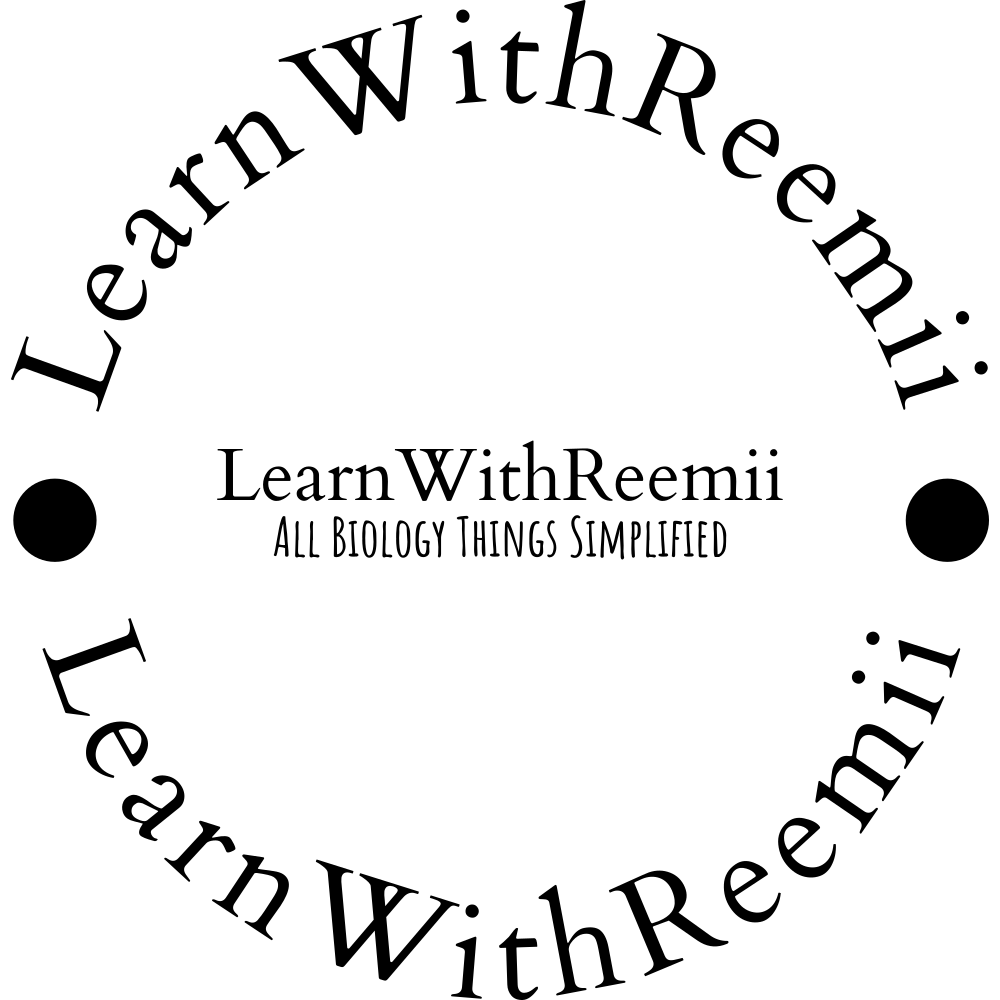Macromolecules - Part 1
So here we are going to our basics, take a deep breath and let's start with some questions.
- What are the 4 main macromolecules of life?
- What are Macromolecules?
- How are polymers synthesized (or broken down)?
Well, if you answered one of these questions right then you already have a good head start. If not, it’s okay cause I’ll go over them in a bit.
The thing about basics is that sometimes it could be overwhelming but you have nothing to worry about because I am here to break everything down for you!!
Looking for something specific? Check out the list below!
All about Macromolecules
What are the 4 main macromolecules of life?
Carbohydrates, proteins, lipids and nucleic acids. Macromolecules are significant for the functionality of many biological processes. They are the building blocks of all living organisms and it's absence can have major effects. Macromolecules play pivotal roles in the structure, function as well as regulation of many biological systems. Thus, it's crucial to know and understand such important components because without them we wouldn't function.
What are Macromolecules?
First, let’s break down the word macromolecules, macro- means huge or big and -molecules are groups of atoms. The most simple definition of macromolecules is that they are polymers build from monomers through a process known as polymerisation.
To simply understand the concept let us imagine a lego set where you have small pieces of lego (a monomer) that link together to give you a bigger figure (a polymer). The lego pieces are designed to be linked and unliked to make many different figures.

Now let’s connect it, a macromolecule is basically a bunch of monomers linked together via a covalent bond making a polymer.
This part requires a tiny bit of chemistry to understand, but fear nothing because I will simplify everything right about now.
The chemistry behind Macromolecules
How are polymers synthesized (or broken down)?
It's pretty simple, it occurs through 2 simple reactions known as dehydration and hydrolysis. In another simple words it's by either removing or adding water molecules.
To synthesize polymers, a dehydration reaction occurs in which a water molecule is released, but from where did the water come from?
Well a bond occurs between 2 monomers each contributing to the water molecule where one gives a Hydrogen (H) and the other gives a Hydroxyl group (OH).
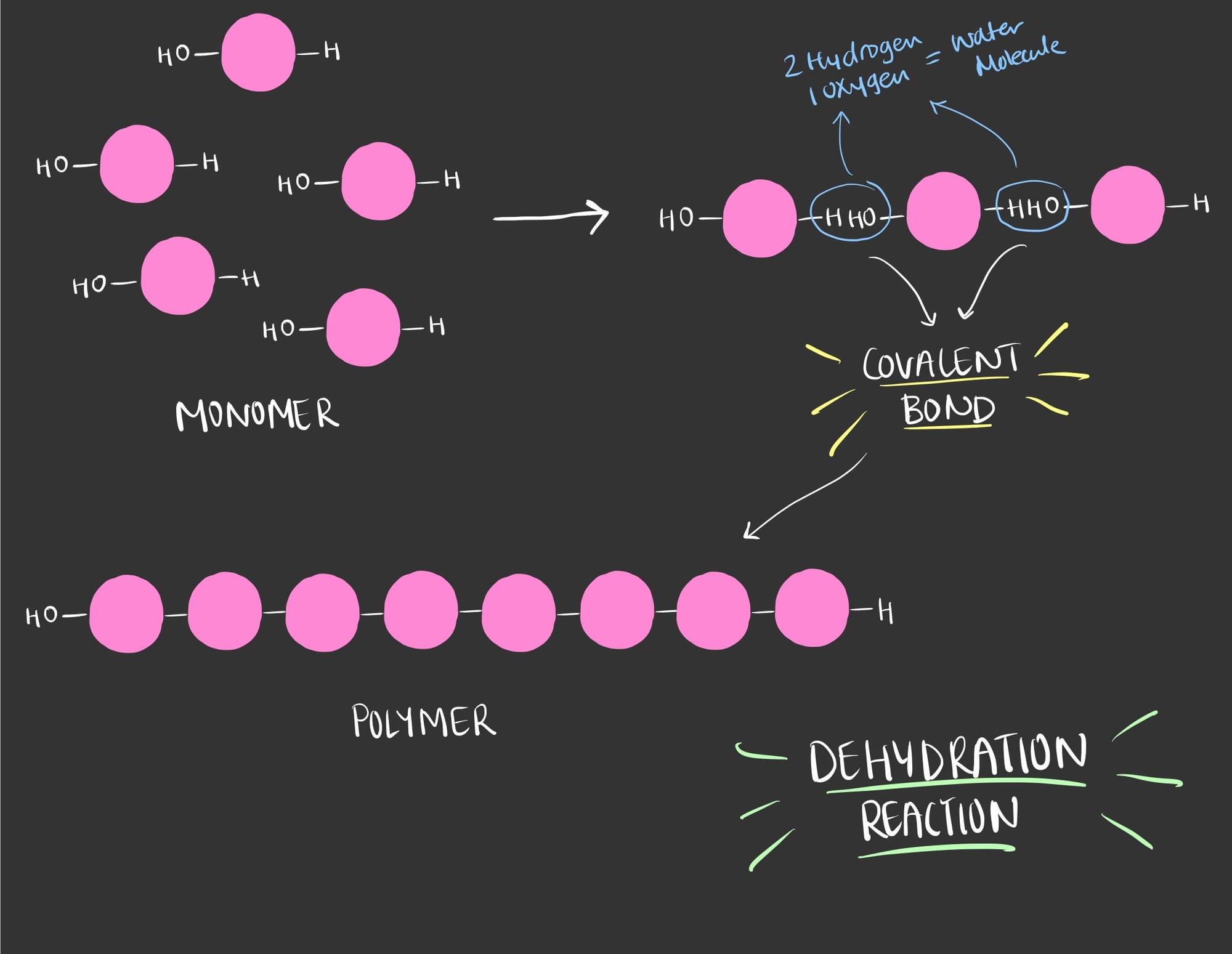
While to breakdown polymers, a hydrolysis reaction occurs in which a water molecule is added between the two bonded monomers, separating them.
Thus, a Hydrogen (H) from the water will attach to one monomer and the Hydroxyl group (OH) will attach to another.
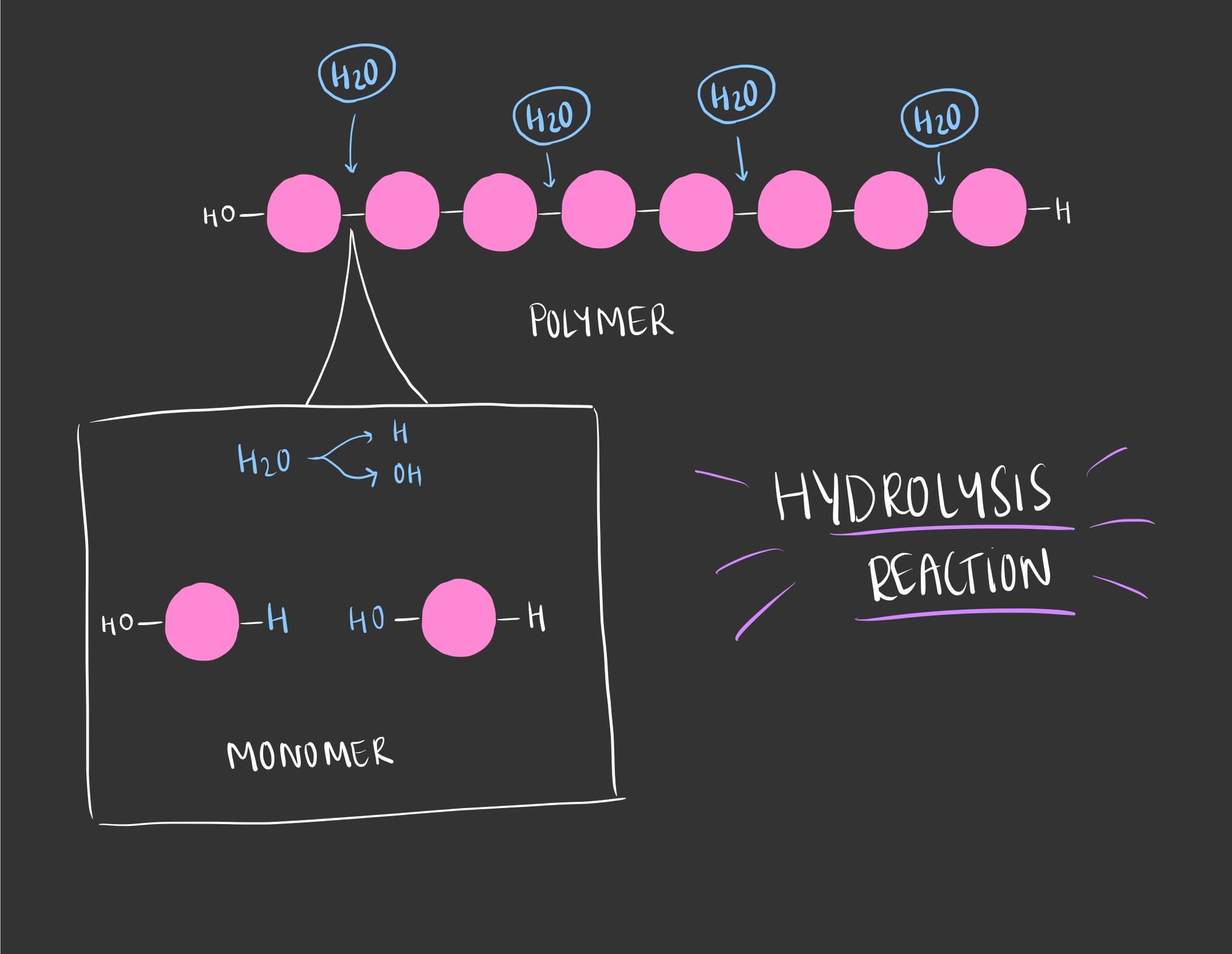
Now that we covered the general idea of what are macromolecules and understood what are monomers and polymers as well as how to form and break them.
Let's go into the 4 categories of macromolecules and discuss each one.
Carbohydrates: Everyone's guilty pleasure!
Carbohydrates are all these things that everyone likes, SUGARS!! It is one of the MOST crucial components of our survival since we need energy to do many biological processes.
Carbohydrates are classified into groups based on the amount of bonded sugars these groups are monosaccharides, disaccharide, oligosaccharides and polysaccharides.
Monosaccharides are simple (single) sugars.
Disaccharide are two sugars.
Oligosaccharides are 3-10 sugars.
Polysaccharides are complex (many) sugars.
Note: the scientific name of sugar is Saccharide. Hence, the naming Monosaccharide meaning one sugar, Disaccharide meaning two sugars and so on.
Let's circle back to the name. Why is it called a Carbohydrate?
A sugar contains a carbon, hydrogen and oxygen. In fact all carbohydrates have the same molecular formula which is CH2O with the a ratio of 1:2:1. Thus, there will always be twice as much hydrogen as there is carbon and oxygen.

All types of sugars
Now let's learn more about the different types of sugar:
- Starting with the simplest form. Monosaccharides are the simplest form of sugar found in our bodies, it is found traveling through our blood. The three types of monosaccharides are glucose, fructose and galactose.
They all have the same chemical formula which is C6H12O6.
- Glucose is the most known simple sugar that we consume on daily basis.
- Fructose is a much sweeter version of glucose that can be found in fruits and sweeteners.
- Galactose is less sweet and can be found in diary products as it bonds with glucose to produce lactose.
This figure shows the structure of the monosaccharides.
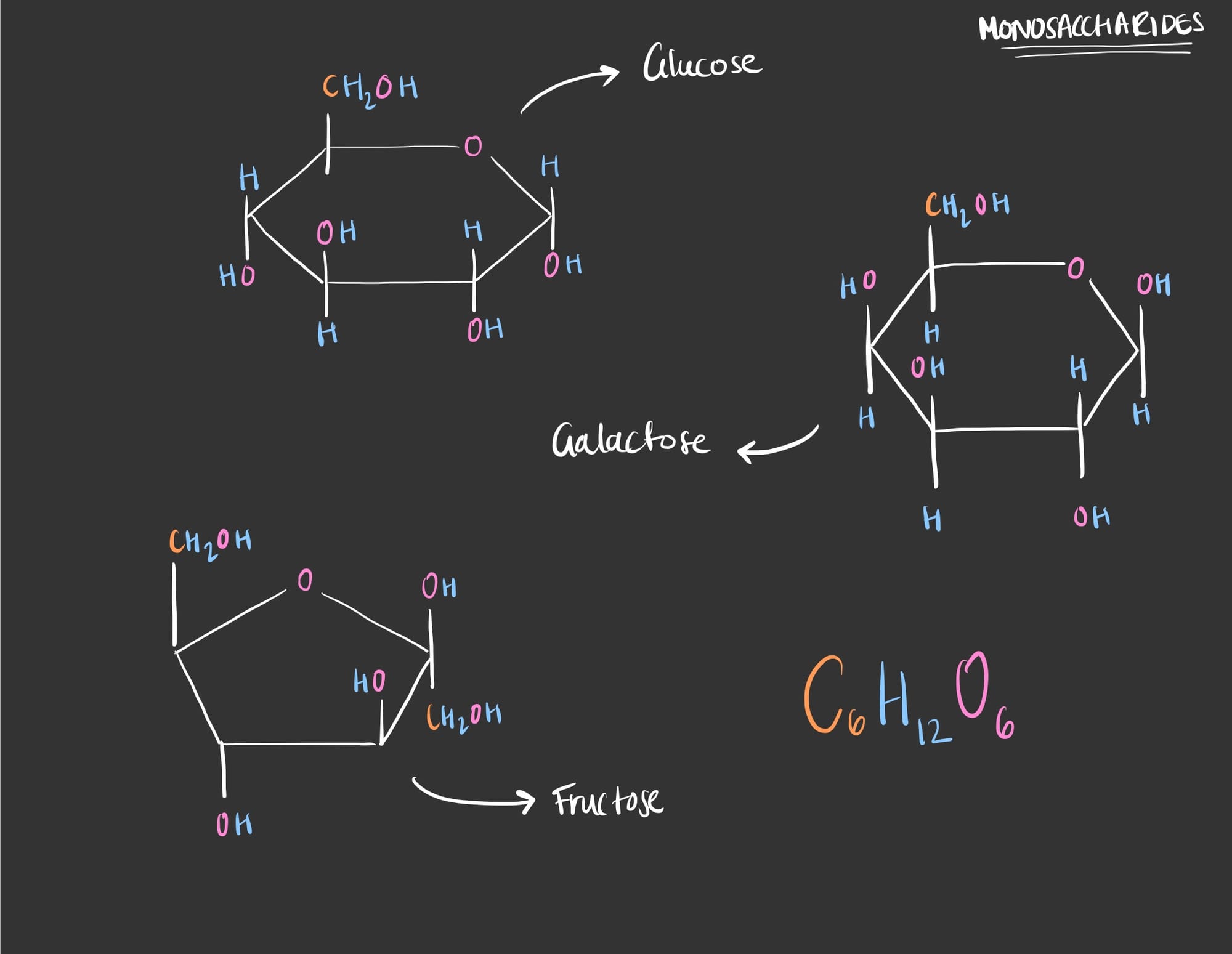
- Disaccharides are the combination of two monosaccharides via chemical bonding known as a glycosidic linkage. It is a covalent bond that occurs between two monosaccharides through a dehydration reaction.
- For example, a bond between glucose and fructose gives us a sucrose which is also known as table sugar. Once sucrose is consumed, it must be broken down via a specific enzyme known as sucrase before being able to travel through the blood and be utilized.
- Similarly, lactose in milk is produced due to the bonding between glucose and galactose and can be broken down via an enzyme known as lactase.
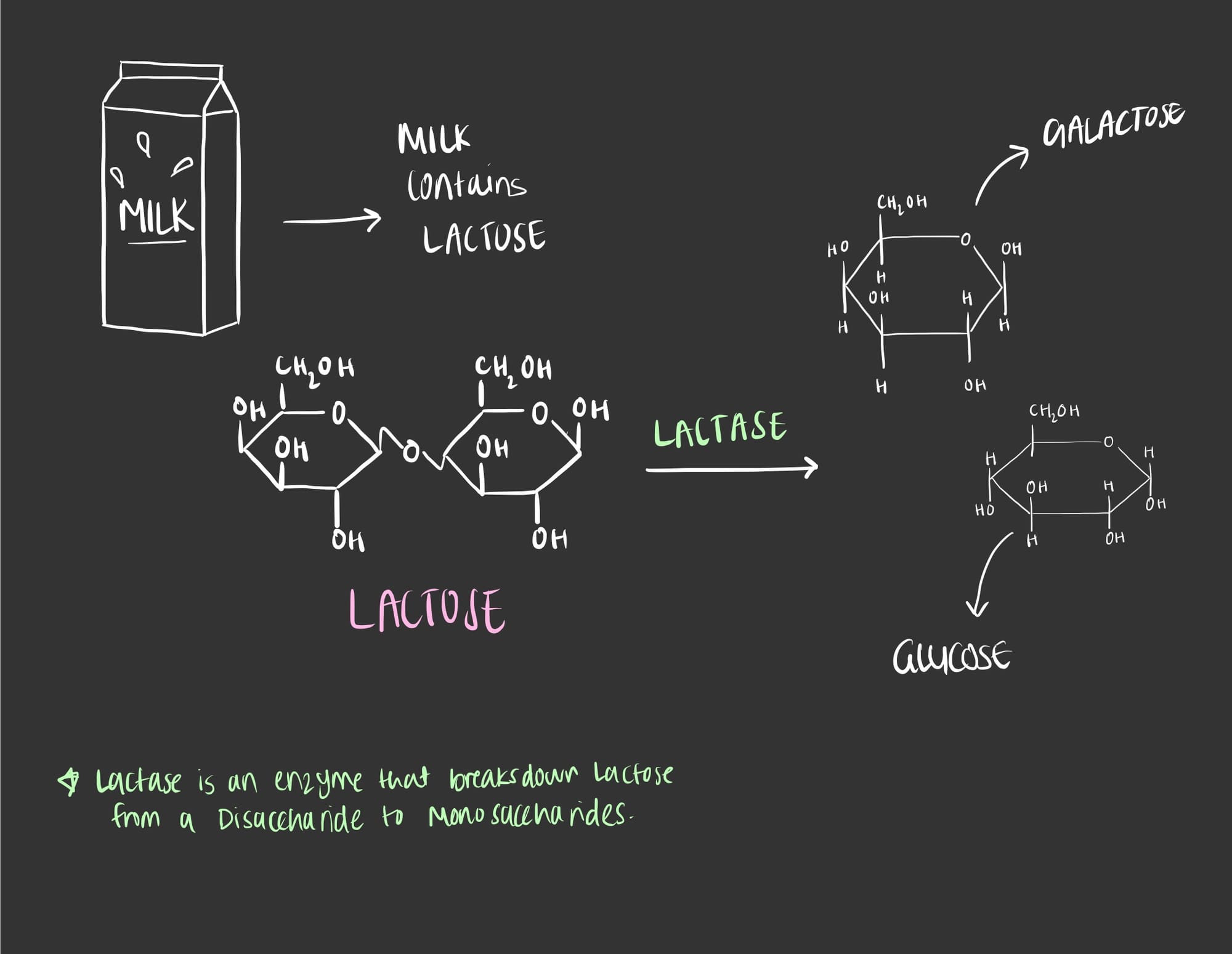
- Oligosaccharides are specifically found on structures present on the cell membrane known as glycoproteins which is sugars + proteins. These glyco structures consist of oligosugars which serve specific functions such as cell signalling and attachment to extracellular matrix.
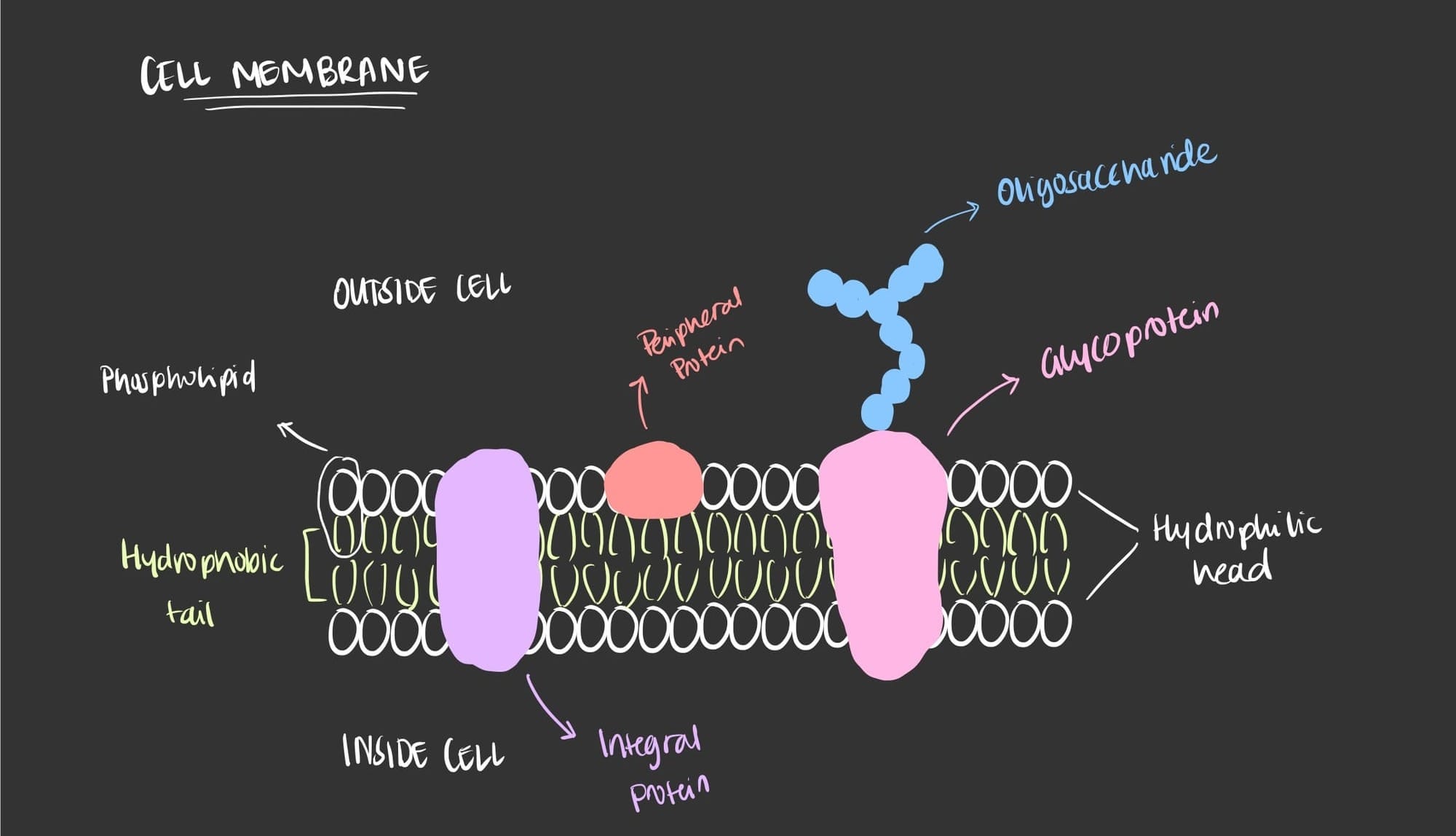
- Now to the most complex of them all, the polysaccharides. These are essentially hundreds and hundreds of sugars bonded together to create this complex sugar. To fully understand this we will take three examples:
- Plants produce something known as starch which can be found in potatoes but why do plants do that? It is done so plants can store high amounts of energy and access it when it's really required by breaking down the starch into monosaccharides aka glucose.
- Now let's see the same concept but in the human body. Once we consume starches or other sugars, we break them down into it's monosaccharide form and then we bond them over and over again to form a structure known as glycogen which we store in our livers and muscle cells. When sugar levels are low and energy is required the liver breaks down the glycogen to release the monosaccharides, glucose, that can be used by the body.
- Polysaccharides can also be used for structural support. Plants produce something known as cellulose which is a crucial component in the cell wall of plants. In fact, cellulose is what makes the plants' cell walls so tough to breakdown. It is a polymer of glucose that is bonded together to form a long chain known as cellulose. We humans cannot digest it, as in our digestive system can't breakdown cellulose into its monomer form unlike cows that can breakdown cellulose and utilize the glucose.
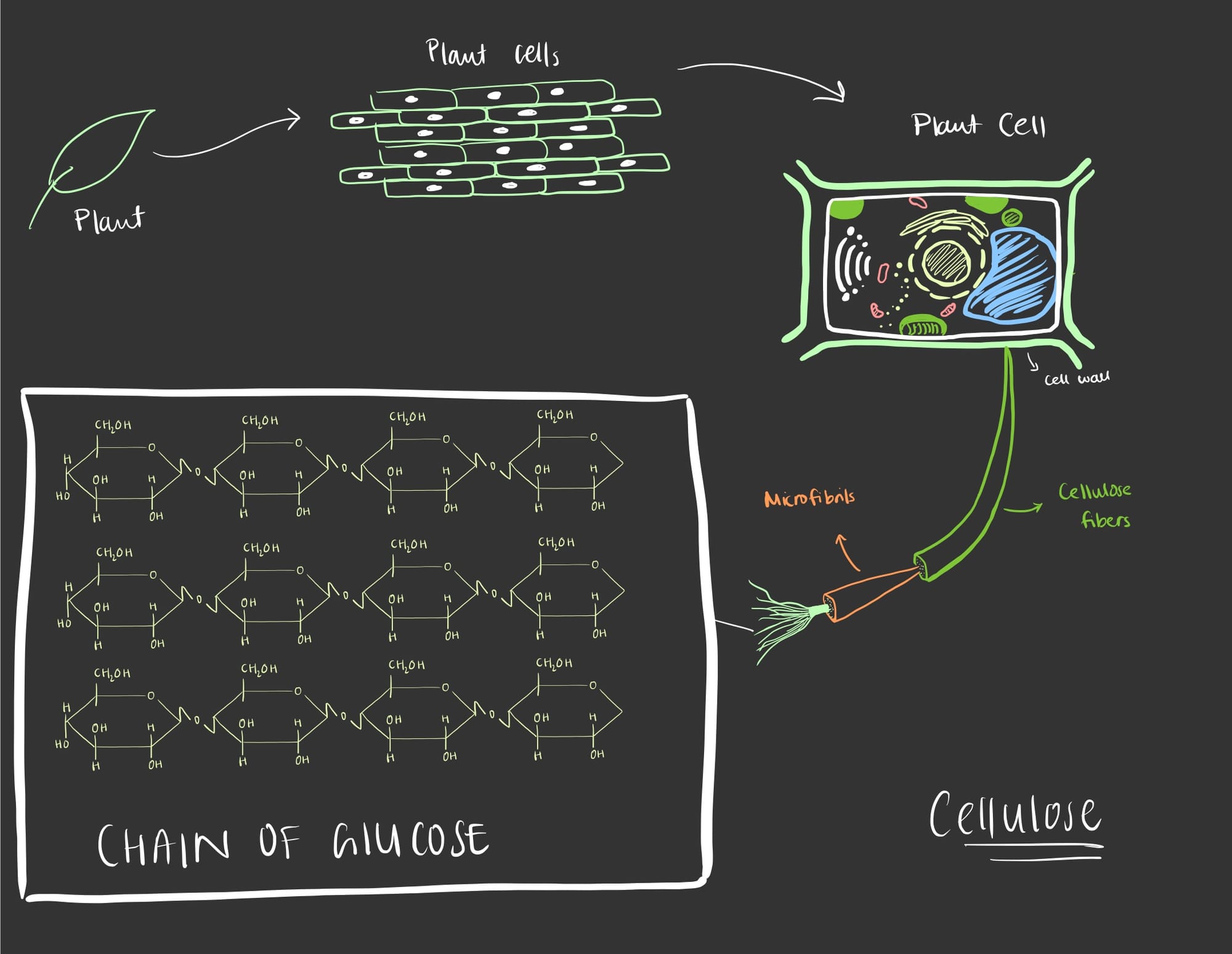
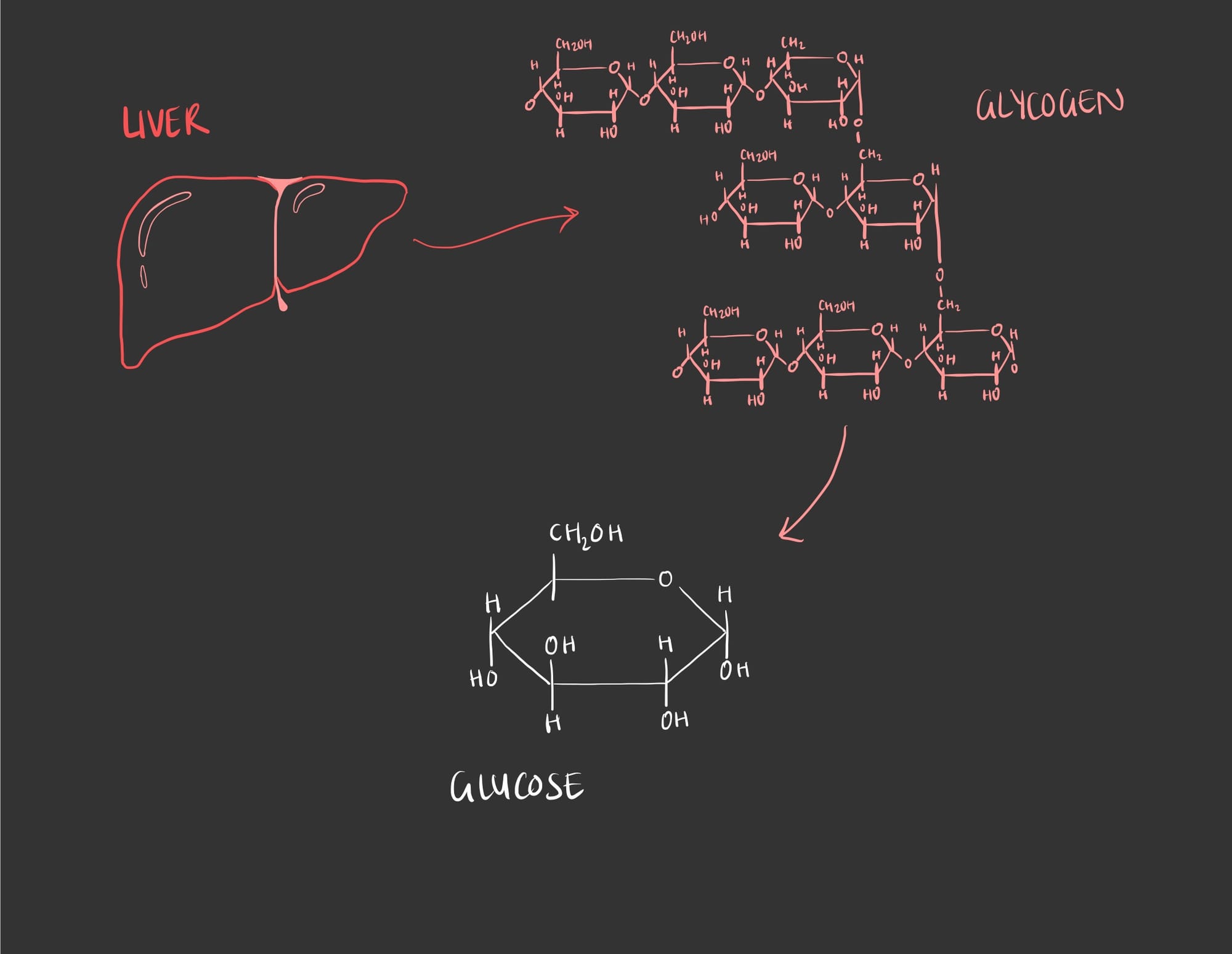
To recap, carbohydrates are sugars and there are many different types of sugars based on the number of sugars from simple to complex. Glucose is one of the most simple forms of sugar while starch and glycogen are one of the most complex. A disaccharide, oligosaccharide and polysaccharide contain more than one sugar that is bonded via a glycosidic linkage through a dehydration reaction. On the other hand, breaking down bonded sugars occurs through a hydrolysis reaction.
Proteins: We eat it to break it!
Proteins are so important for many different pathways. If we look at it from another perspective we are basically made up of many many proteins, because that is what our genes produce (coded genes to be more specific). Proteins are the translators of our genes, they are the molecules that can be found through out our bodies with various functions.
Okay, first things first proteins are made up of building blocks known as amino acids, there are 20 different amino acids that bind together to produce many different types of proteins via a peptide bond.
A polymer of a protein is referred to as a polypeptide.
Proteins are one of the most complex molecules found in our bodies that serve specific functions. They are highly abundant in our cells with many roles including structural stability, cell communication and signalling, storage, defence and much more.
So, what are proteins?
Proteins are functional molecules that consist of one or more polypeptides that is folded and coiled specifically to a 3-D structure.
Protein structure consists of 4 different levels: primary, secondary, tertiary and quaternary each having unique characteristics and complexity.
From where do get these amino acids? we get them from what we EAT.
I know it's taking the 'you are what you eat' to whole another level but it's true. We get our amino acids from our diets which we then breakdown and bond to make different kinds of proteins.
Before we discuss more about the function and importance of proteins, let's see the amino acid structure.
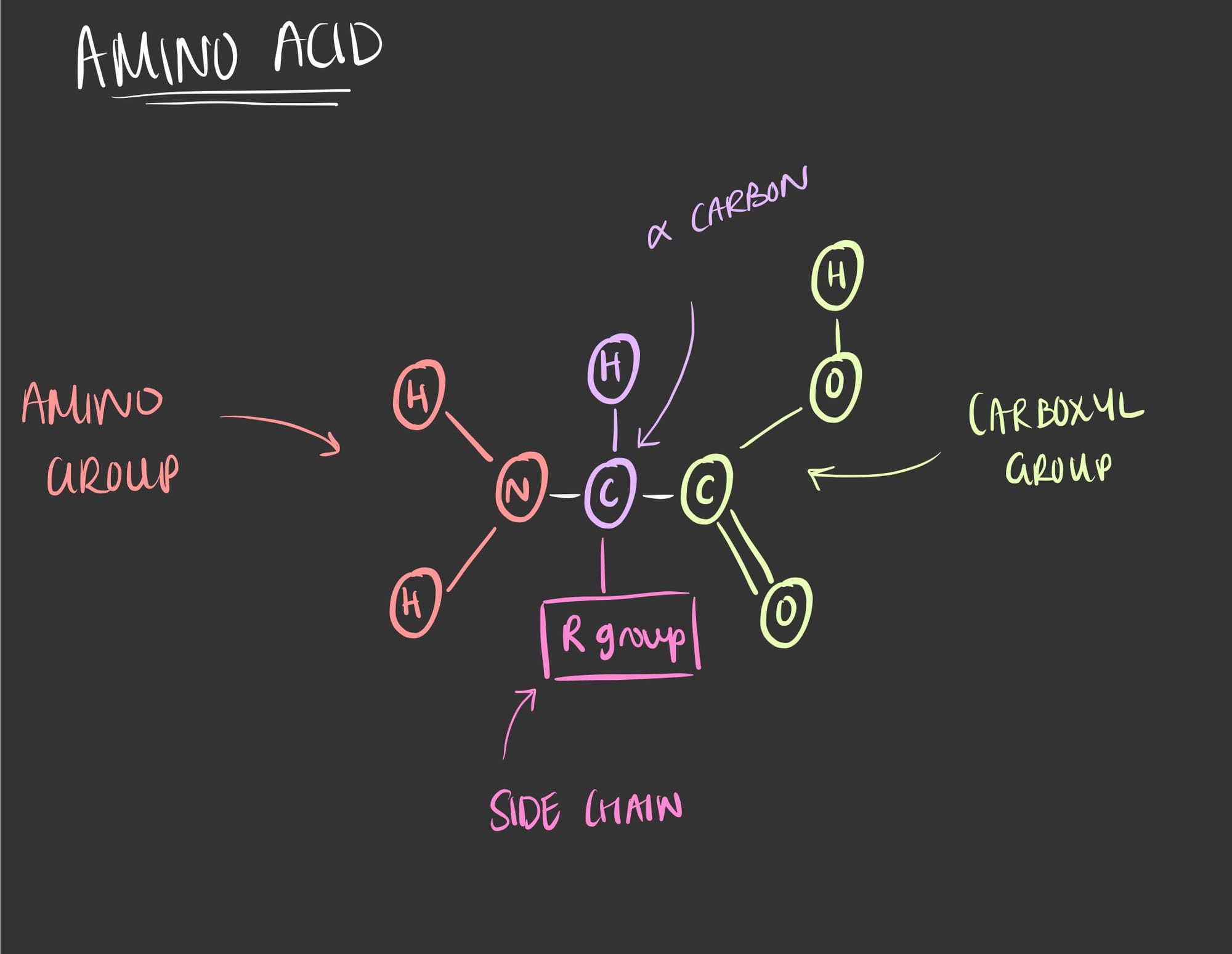
As seen in the figure above, an amino acids consist of an amino group, a carboxyl group, an alpha (⍺) carbon and an 'R' group. The 'R' group is also referred to as the varient group or side chain since it is what makes the 20 different amino acids.
From monomers to polymers - Amino acids edition
Do you remember when we previously discussed about the making and breaking of polymers, that it occurs through two main reactions: dehydration and hydrolysis.
Alright then, now we will look at from the protein perspective.
Polypeptide chain formation is step 1 of the protein structure and function.
So, how is a polypeptide chain formed?
The polypeptide chain is formed via a dehydration reaction. To better understand the concept I made this visual diagram.
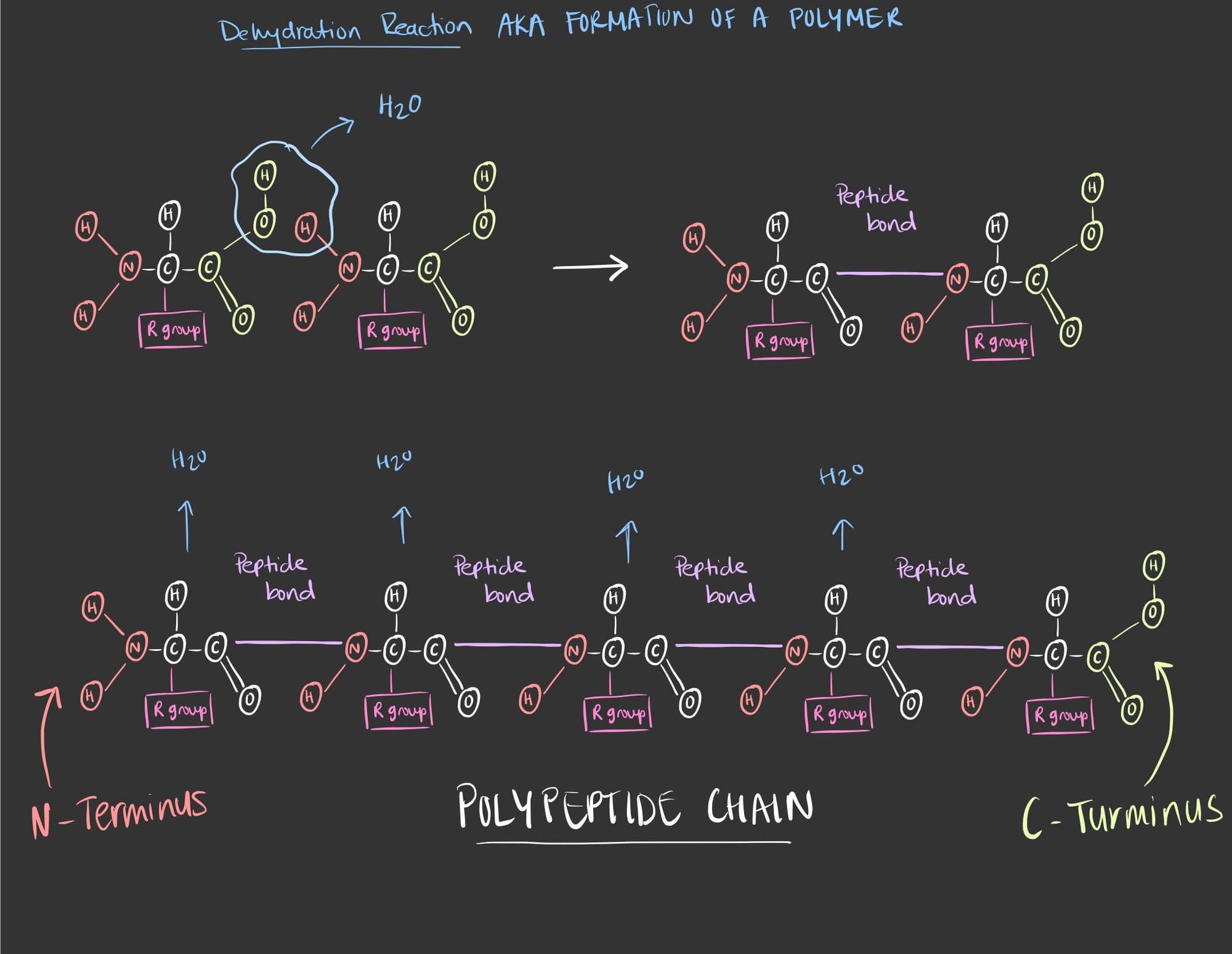
Now, let's put what we see into words.
All amino acids contain three main things, an amine group, a carboxyl group and an alpha (⍺) carbon. When one amino acid binds to another it forms a new peptide bond. The formation of the peptide bond is a result of a dehydration reaction in which a water molecule is released.
Where does the peptide bonds occur?
The peptide bond occurs between the carboxyl group of the first amino acid and the amino group of the second amino acid.

Note: A polypeptide chain will always have a free amino group (N-terminus) on one side and a free carboxyl group (C-terminus) on the opposite side.
More about the 'R' Group
The 20 different amino acids can be differentiated from one other via its 'R' group or the side chain. The 'R' group gives each amino acid a unique property which then contributes to the protein's function and structure.
These 'R' groups can be hydrophilic, hydrophobic, acidic or basic. The peptide chain formation will have what is known as a peptide backbone which consists of the amino group, carboxyl group and alpha (⍺) carbon while the side chain depends on the amino acid added.
Protein structure
Now that we've delved into the basics of amino acids and polypeptide chain formation, let's explore the intricate structure of proteins.
Like a complex puzzle, proteins fold and coil into specific 3-D structure, crucial for their diverse functions.
This might be the most complicated part of the proteins segment but it's nothing that can't be broken down to simple words.
- Primary Structure: The primary structure of a protein refers to the linear sequence of amino acids in a polypeptide chain. This sequence is determined by the genetic code encoded in DNA (more on this in gene transcription & translation). Even a slight alteration in the sequence can lead to significant changes in the protein structure and function.
- Secondary Structure: As the polypeptide chain begins to fold, secondary structures such as alpha (⍺) helices and beta (β) sheets emerge. These structures are stabilized by hydrogen bonds between amino acids, forming recurring patterns along the chain.
- Tertiary Structure: The tertiary structure represents the overall three-dimensional (3D) shape of a single polypeptide chain. The structure is determined by interactions between the amino acids side chains aka the 'R' groups, including hydrogen bonds, di-sulfide bonds, hydrophobic interactions, and electrostatic attractions.
- Quaternary Structure: Some proteins consist of multiple polypeptide chains that come together to form a functional protein complex. The arrangement and interaction of these subunits define the quaternary structure, which is essential for the protein's biological activity. An example of the quaternary structure is the protein Hemoglobin, an oxygen binding protein of the red blood cells.
Let's check out this simplified sketch of the 4 levels of protein structure.
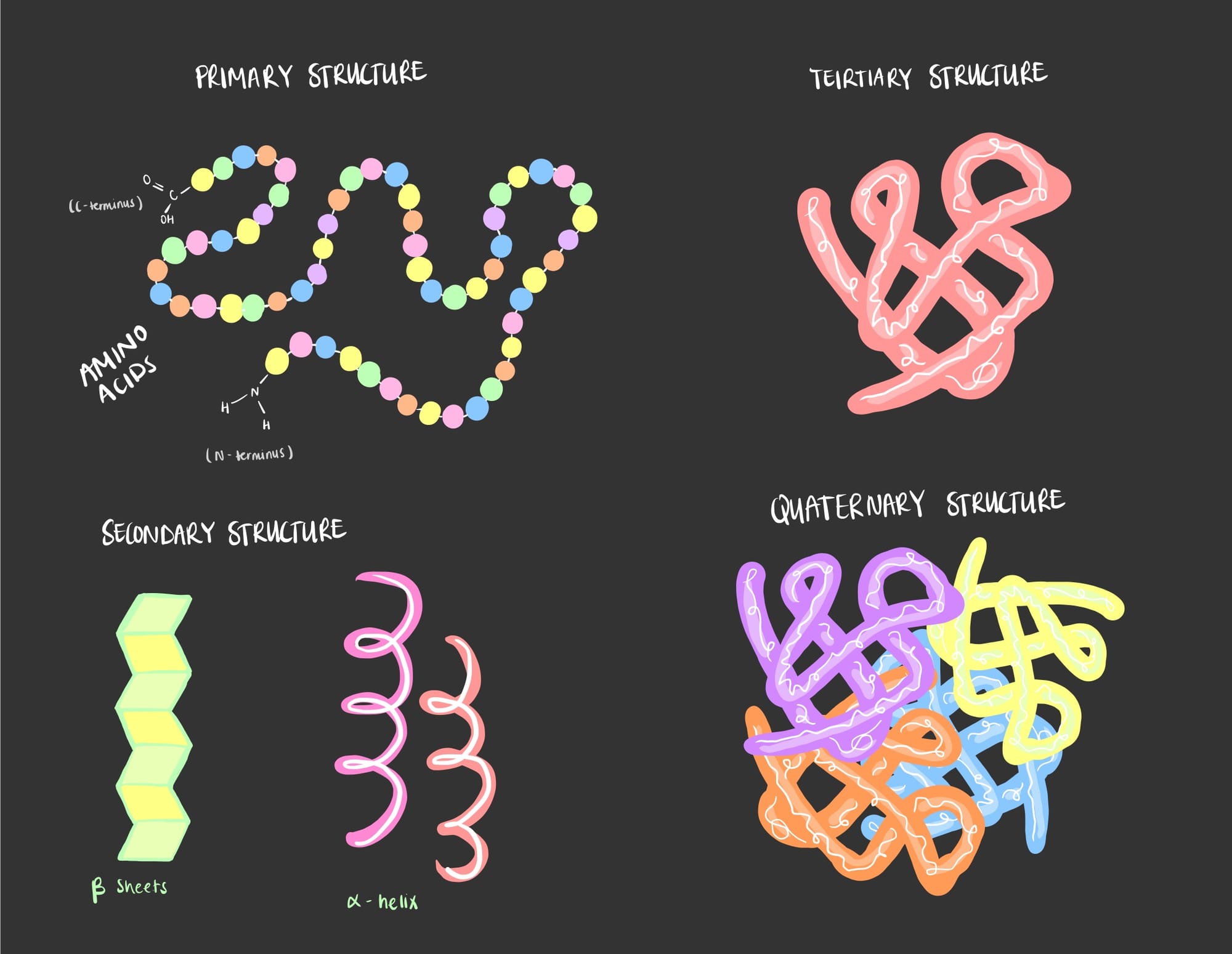
Note: a protein can be functional in the tertiary structure and can proceed into its designated functional location. Not all proteins are quaternary in structure, only the complex ones.
In summary, protein structure is hierarchical, with each level contributing to the overall shape and function of the molecule. The precise folding and arrangement of amino acids are essential for proteins to carry out their diverse roles in cellular processes, from enzyme catalysis to structural support and more.
If you reached this far then give yourself a pat on the back because you just covered 2 out of the 4 main macromolecules.
I hope this was a fun way of learning & reviewing basic information!

If you feel that you want to continue into the 2 next macromolecules, Click the button below!
